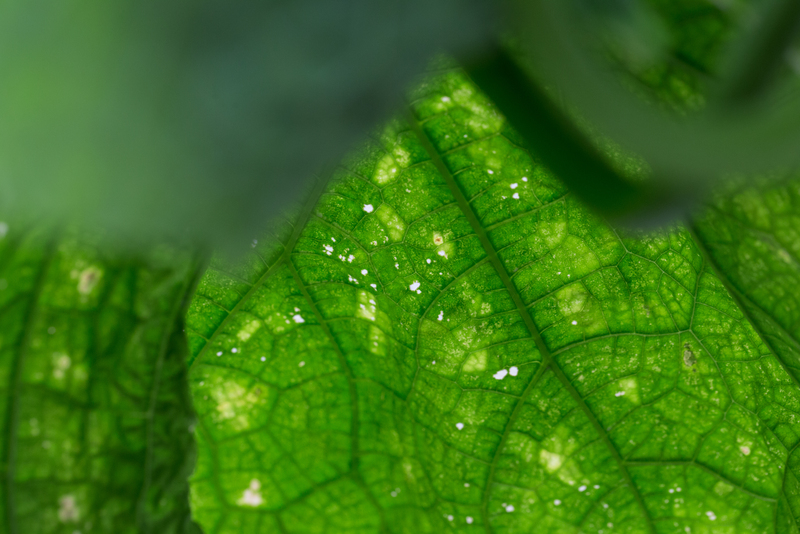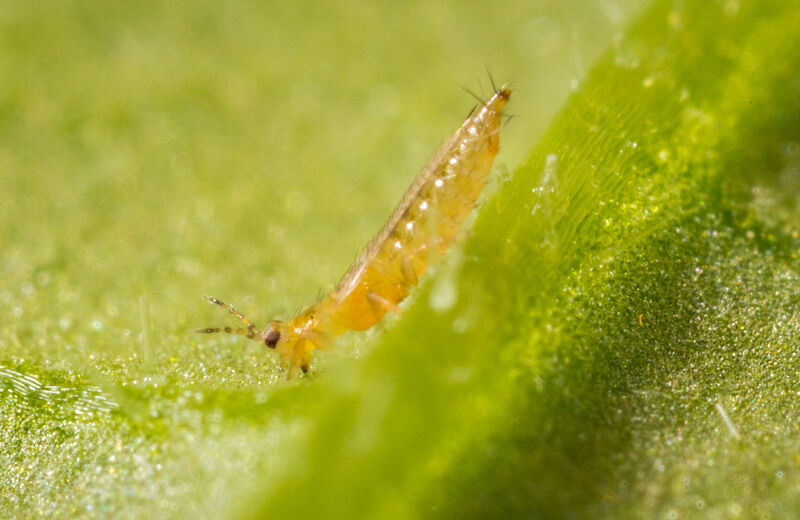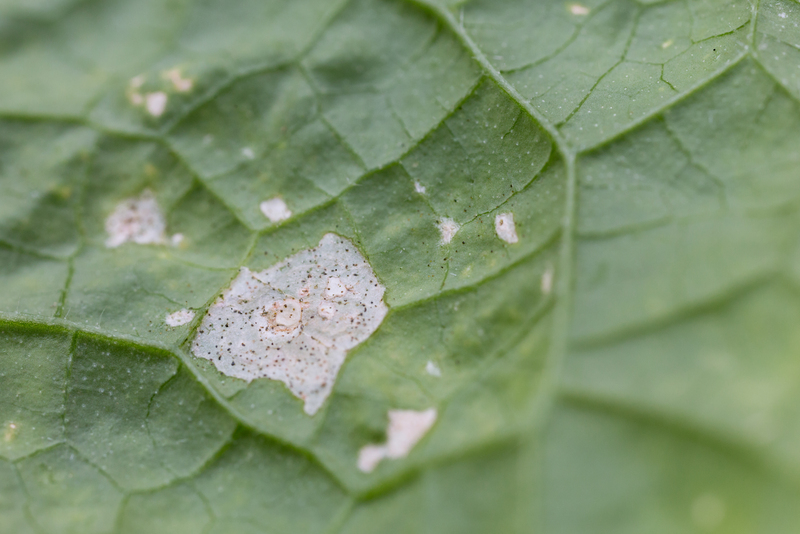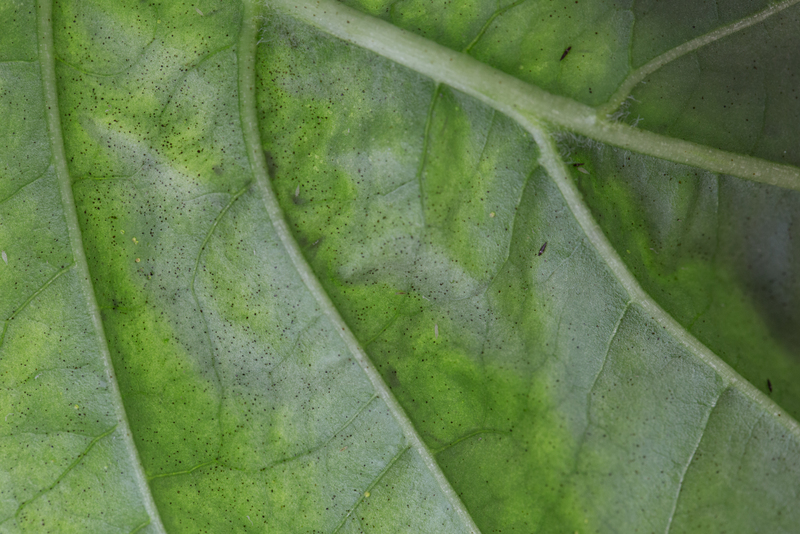
Thrips is a big enemy for many crops and is a problem that can quickly take on big proportions. As a grower, your approach to handling this insect is something you can't take lightly – a well-considered strategy is an absolute must. Knowledge about this pest, together with the guidance of Koppert consultants, will help you make the right choices. Here are ten important facts about thrips to help you brush up your knowledge.
 Western Flower Thrips Frankliniella occidentalis on a leaf
Western Flower Thrips Frankliniella occidentalis on a leaf
1. How can you recognize thrips? These flying insects are slender and extremely small (between 0.5 and 2.5 mm long).
2. The thrips family is very large; there are many species of thrips. But don’t panic: most of them are harmless. Western flower thrips (Frankliniella occidentalis) causes the most trouble. But other species that cause damage are also seen regularly. They're often difficult for growers to distinguish from each other.
3. In order to be effective against thrips, you need to know which intruder you are dealing with. Koppert's experts help you determine the identity of the intruders.

4. Thrips sucks plant juices from the upper leaf and/or flower cells, resulting in the characteristic silver-grey spots and brown dots. This can lead to considerable damage.
5. A very unusual aspect is that the thrips females can lay eggs without being fertilized by a male. Usually only males emerge, but for onion thrips you get just females. When fertilized, their offspring include both males and females.
6. When laying eggs, the female damages the plant. Such damage can lead to a deformation.
7. Action is needed: if measures are not taken, the thrips population in the greenhouse will develop explosively. The western flower thrips, for example, doubles its population in four days. So there's no time to lose!
8. Thrips has an additional weapon in its arsenal: the pupae are often in the soil. This stage can be tackled with parasitic nematodes.
9. The thrips don't like the cold and will rest in a hidden place at low temperatures.
10. The good thing is that you're not alone in the fight against thrips, as predatory mites and bugs are natural enemies of the insect. Nematodes can also play a role in control.

Biocontrol Solutions for Thrips
We’re Here to Help! Beneficial insects are susceptible to chemical treatments and varying environmental and biological conditions.
Entomite-M
• Predatory mite: Stratiolaelaps scimitus
• Target: Eggs, larvae and pupae of sciarid flies and thrips pupae
• Packaging: Cardboard cylinders, containing 10,000 or 50,000 predatory mites (all stages) in vermiculite with peat
Limonica
• Predatory mite: Amblydromalus limonicus
• Target: Various thrips species in 1st and 2nd larval stage & greenhouse & tobacco whitefly eggs and larvae
• Packaging: 1000 ml bottle, containing 12,500 predatory mites (nymphs and adults) in millet husks, bran and sawdust
Swirski-Mite, Swirski-Mite Plus & LD
• Predatory mite: Amblyseius swirskii
• Target: Young larvae of various thrips species and greenhouse and tobacco whitefly eggs and larvae
• Packaging: 1 L bottle, contains 50,000 predatory mites; Each bottle with dosage cap contains predatory mites (nymphs and adults) mixed with bran. (Plus) Box with 100 sachets Box with 500 sachets; each paper sachet contains 250 predatory mites and storage mites mixed with bran. (LD - Long Duration) Box with 500 sachets; each paper sachet contains 125 predatory mites and storage mites mixed with bran
Swirski Ulti-Mite
• Predatory mite: Amblyseius swirskii
• Target: Greenhouse & tobacco whitefly eggs and larvae and young larvae of various thrips species
• Packaging: Each sachet with hook contains 250 predatory mites and storage mites (all stages) mixed with carrier material/bran. Ulti-Mite Swirksi is available in 100 or 500 sachets per box
Thripex
• Predatory mite: Neoseiulus cucumeris
• Target: Thrips in 1st larval stage
• Packaging: 1,000 ml bottle, contains 50,000 predatory and grain mites; 6,000 ml bucket, contains 100,000 predatory and grain mites; 6,000 ml bucket, contains 500,000 predatory and grain mites; each bottle or bucket contains predatory mites (all stages) and grain mites (all stages) mixed with bran
Thripex-Plus
• Predatory mite: Neoseiulus cucumeris
• Target: Thrips in 1st larval stage
• Packaging: 500 sachets per box; each paper sachet with hook contains 1,000 predatory mites and grain mites (allstages), mixed with bran
Thripor-I • Predatory (Pirate) bug: Orius insidiosus, Orius laevigatus, or Orius strigicollis
• Target: Various species of thrips larvae and adults
• Packaging: 100 ml bottles containing 1,000 adults and nymphs mixed with vermiculite
Distribution Technology
Distribution technologies enable a more efficient and effective way of distributing beneficial insects throughout the greenhouse or open field.
• Mini-Airbug
• Airbug
• Airobug